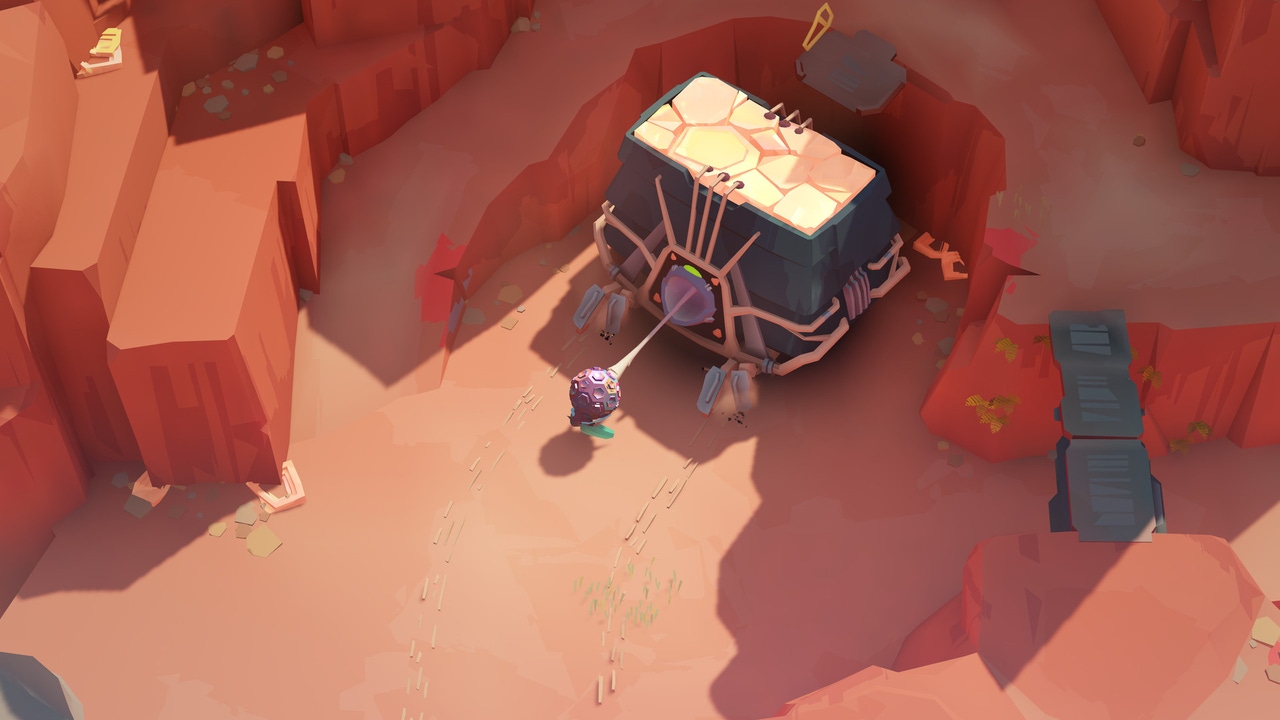Trending
Opinion: How will Project 2025 impact game developers?
The Heritage Foundation's manifesto for the possible next administration could do great harm to many, including large portions of the game development community.

Geometric Interactive's Cocoon won praise from players, the game industry, and our staff for its unique mechanics and exceptional vibes. It's a gorgeous game that didn't need powerful 3D graphics to hypnotize players, and its art direction, environment design, and soundtrack are as praise-worthy as its brain-teasing puzzles.
How can developers hoping to follow in Cocoon's footsteps learn from its success? According to Geometric Interactive co-founders Erwin Kho and Jakob Schmid, they should look back at art from 1970s for fresh inspiration.
"Go listen to the music of Tangerine Dream from the '70s," quipped Schmid, Cocoon's audio director. We were chatting fresh off of Cocoon's win for "Outstanding Achievement for an Independent Game" at the 2024 DICE Awards.
Kho agreed, pointed developers to science fiction films from the '70s and '80s—but specifically the low-budget ones (not just Star Wars). "There's something about the low-budget ones—they're still trying to convey a world and a lot of [the world] is 'implied,'" he said. "It's really cool what they were able to do on a small budget."
You can see many schlocky flicks from that time period on riffing shows like Mystery Science Theater 3000, but commercially successful fare like Logan's Run or the Stepford Wives are good examples too. It's an era where a decline in theatergoing (attributed, depending on which scholar you cite, either to the rise of television, "white flight" from American cities to the suburbs, or some combination of the two) drove distributors to push sex, shock value, and can't-see-on-TV visual effects to attract regular theatergoers.
A film Kho and I briefly gushed over was the 1976 David Bowie-starring film The Man Who Fell to Earth. Bowie's otherworldly performance is only half of the spectacle here—moody lighting, a dreamy story, and editing that cross-fades between Earth and a distant planet feel like something rarely seen since in cinema.
The sci-fi advancements and alien worlds of the movie are slapped together with plastic, sheet metal, and strong lighting. You can tell that! But their placement in the film speaks to the "implied world" Kho described.
'70s and '80s cinema has a host of examples like this—so if you're in need of inspiration, you can sign up for a Criterion Collection subscription, or just swing by the Mystery Science Theater 3000 infinite livestream running over on YouTube.
You May Also Like